Light and tender cake loaded with fresh, tangy lemon and just a hint of aromatic lavender, this Lavender Lemon Sourdough Bundt Cake will make any day feel like a special occasion. Sourdough discard keeps the cake moist for days and a simple lemon glaze intensifies the sweetness.
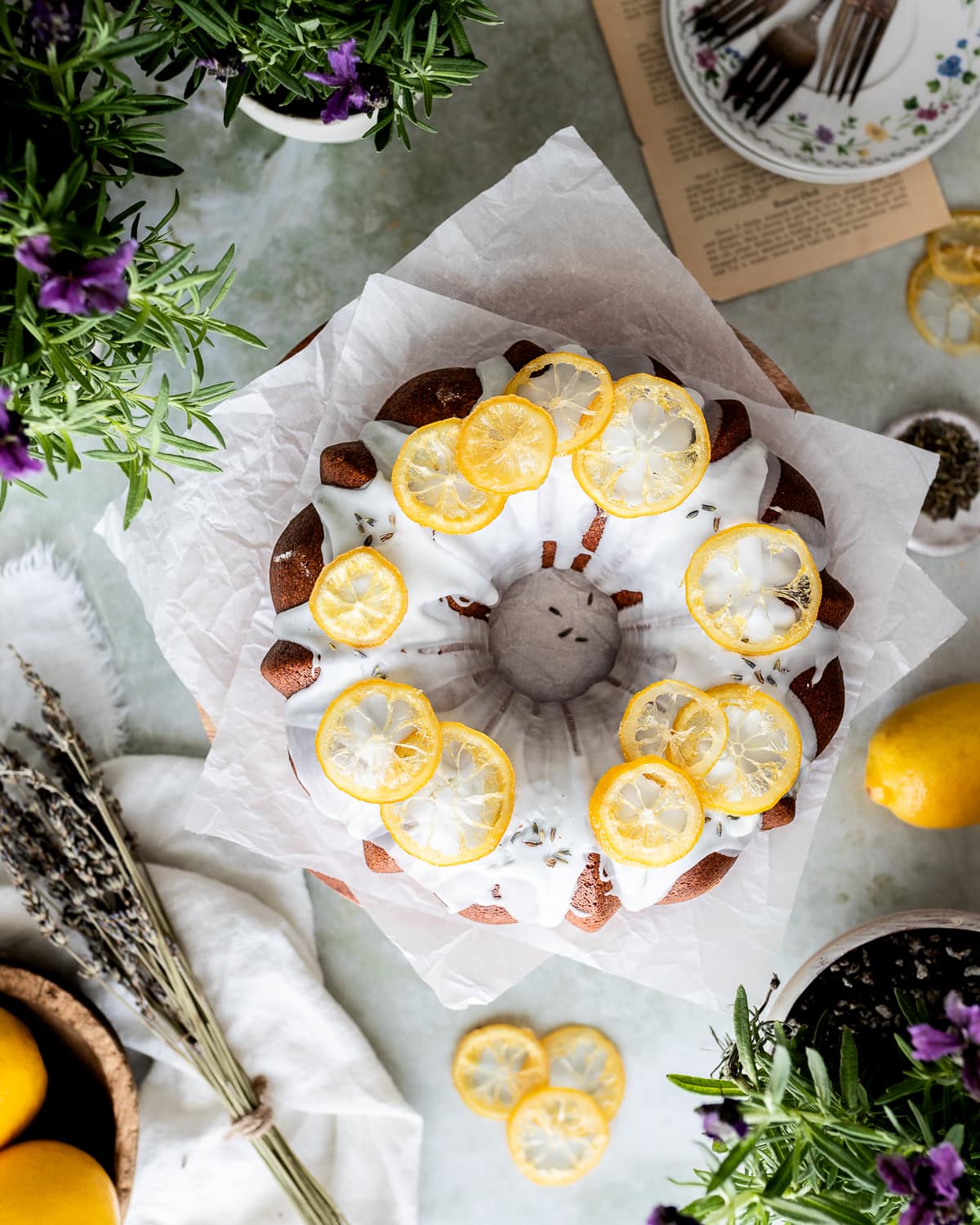
Jump to:
This bundt cake is the perfect centerpiece for a bridal or baby shower or a homemade gift for Mother’s Day. It feels so sophisticated but is so easy to make, takes less than an hour and comes together all in one bowl.
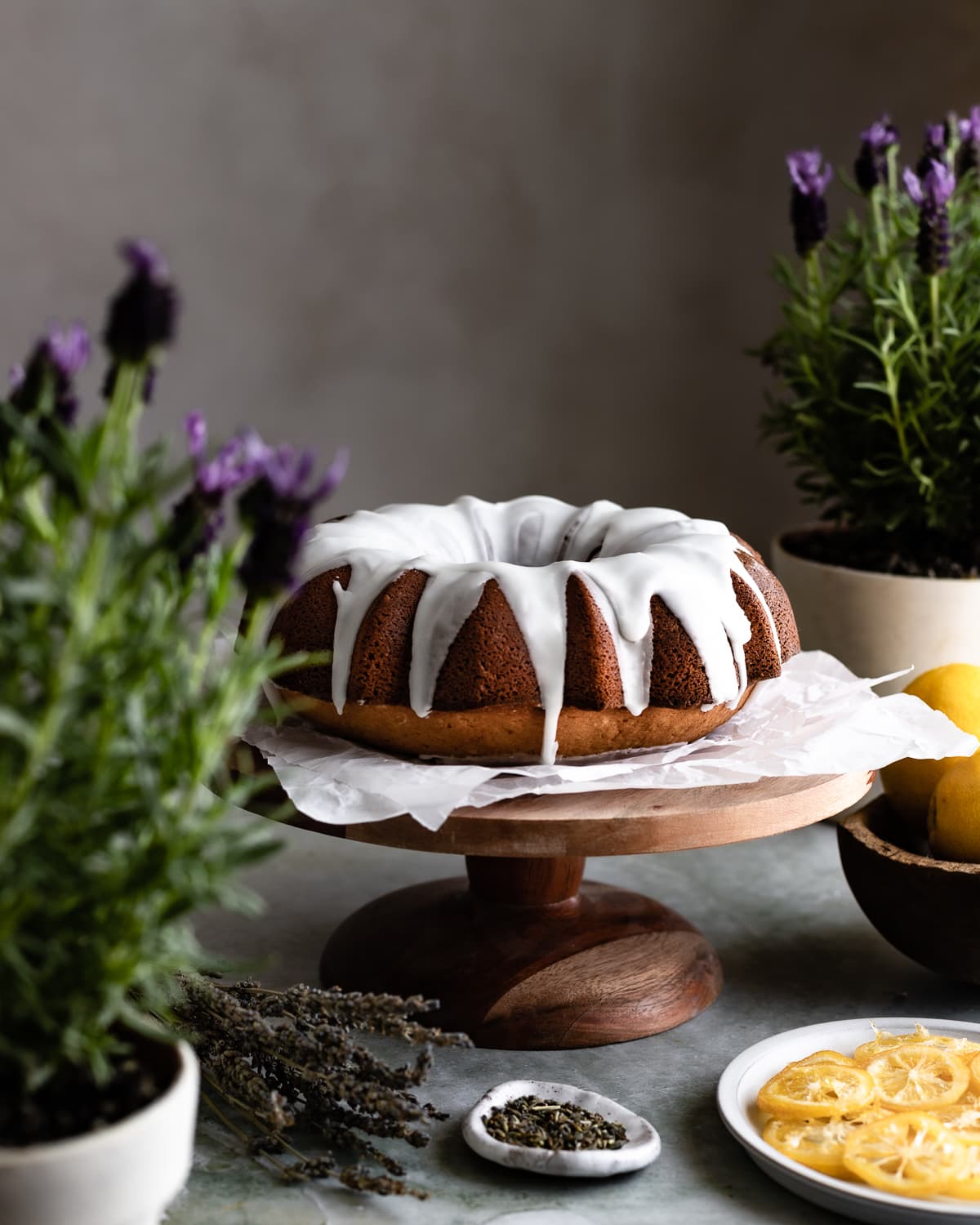
What Makes Bundt Cakes So Special?
Bundt cakes are special because of their shape. They are baked in a special pan, called a bundt pan. This creates more crisp, caramelized surfaces and more flavor!
If you love bundt cakes, try my Sourdough Pumpkin Bundt Cake.
Baking with Sourdough Discard
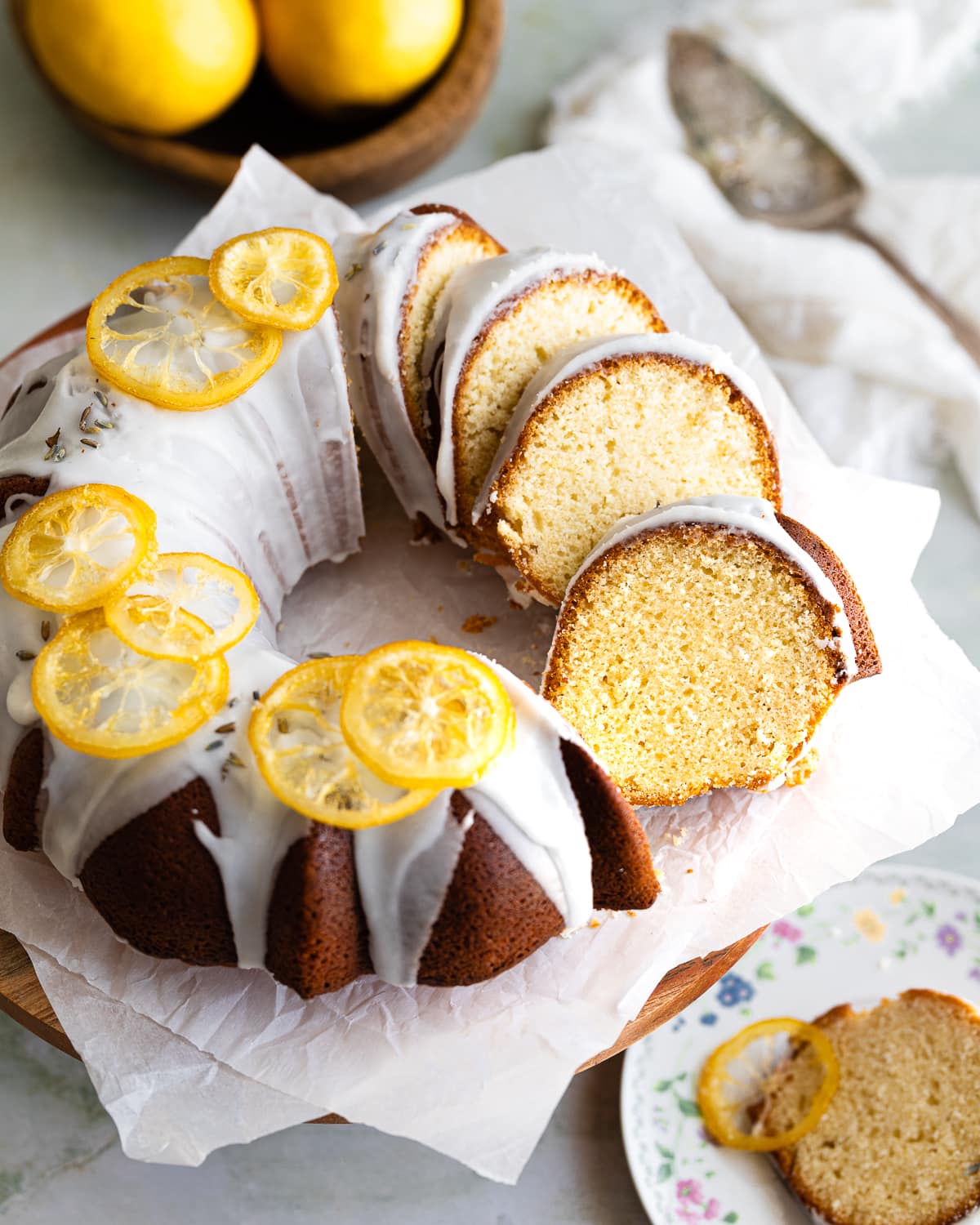
Baking powder helps this cake rise, instead of biological leaveners (commercial yeast or sourdough). As the batter bakes, baking powder produces carbon dioxide which imparts a soft, and fluffy texture to your cake. Because you won’t be using an active sourdough starter to make this cake rise you can bake with your sourdough discard straight from the refrigerator without activating or feeding it first.
What You Need

Lavender: Use dried lavender flowers for this recipe, you can purchase them from a specialty grocery store or online.
Sourdough discard: You can use your discard straight from the fridge, no need to activate it! Add 28 grams of flour and 28 grams of water to the recipe if you don’t have any sourdough discard.
Cake flour: Cake flour has a lower protein content than all-purpose, this prevents too much gluten development which makes for a softer cake, I definitely recommend investing in cake flour for the best results.
Salt: Use sea salt or kosher salt for the best results. Different brands and types come in varying grain sizes, keep this in mind when using volume measurements, gram measures will be the same.
Use room temperature ingredients. Cake batter is an emulsion, and room temperature ingredients, especially butter, milk, and eggs combine or emulsify better. This makes for a smoother batter and a more tender cake. Using cold ingredients with soft butter can cause it to solidify and the batter to seize up.
If you love lemon recipes, try my Sourdough Lemon Cookie Pies and Sourdough Lemon Thyme Biscotti.
Step-by-step Instructions
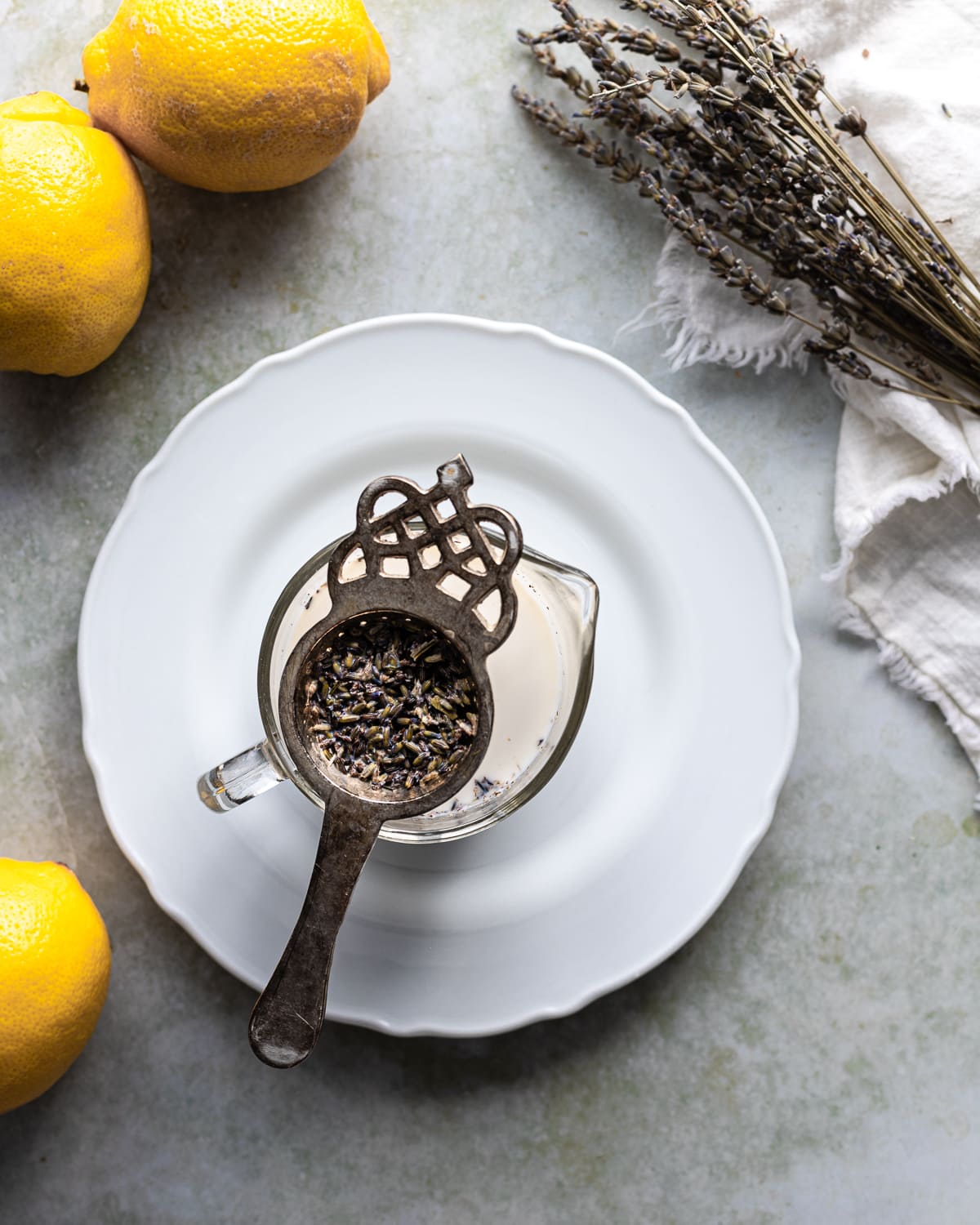
STEP 1: Steep the lavender in warm milk (140 F)
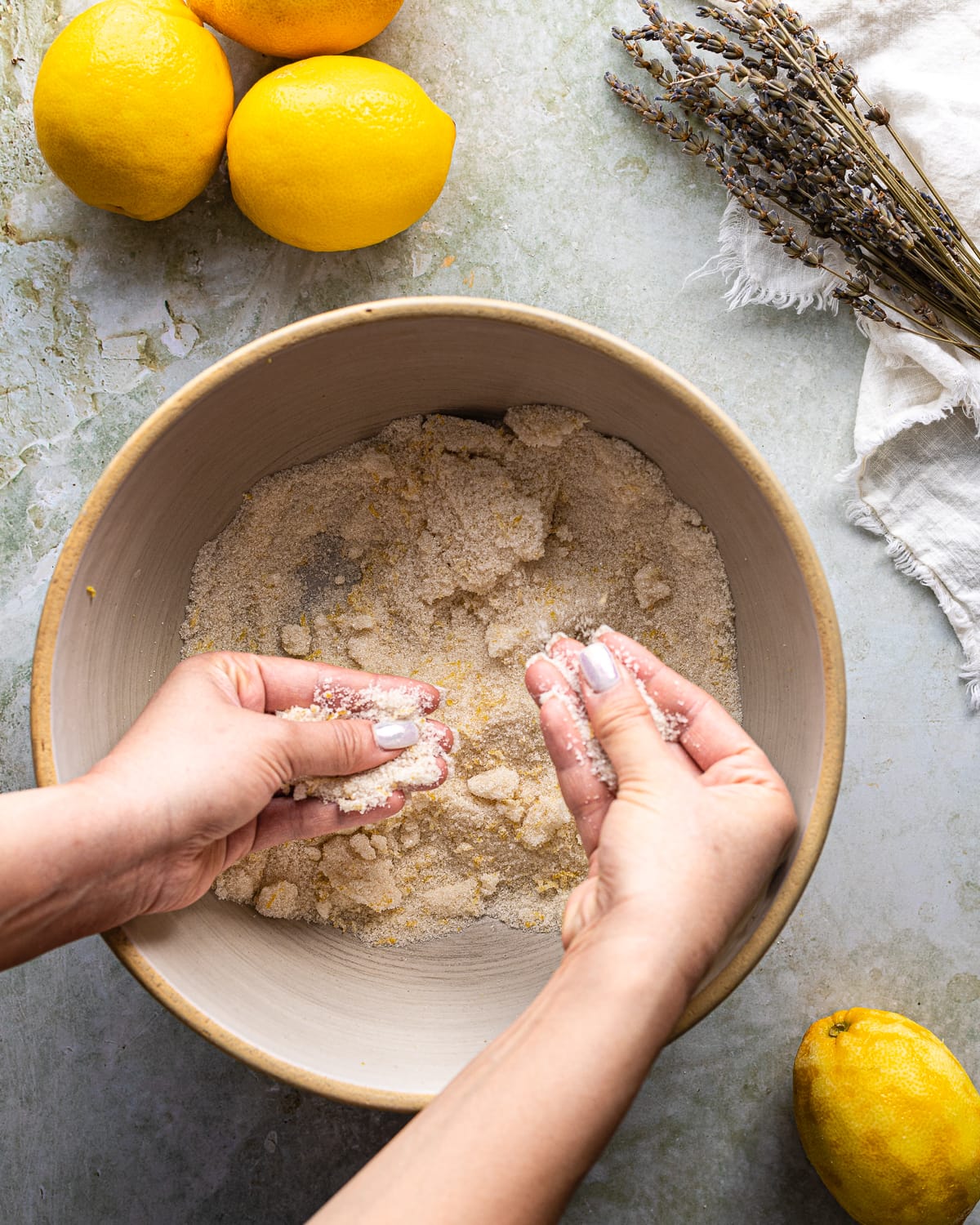
STEP 2: Rub lemon zest in sugar
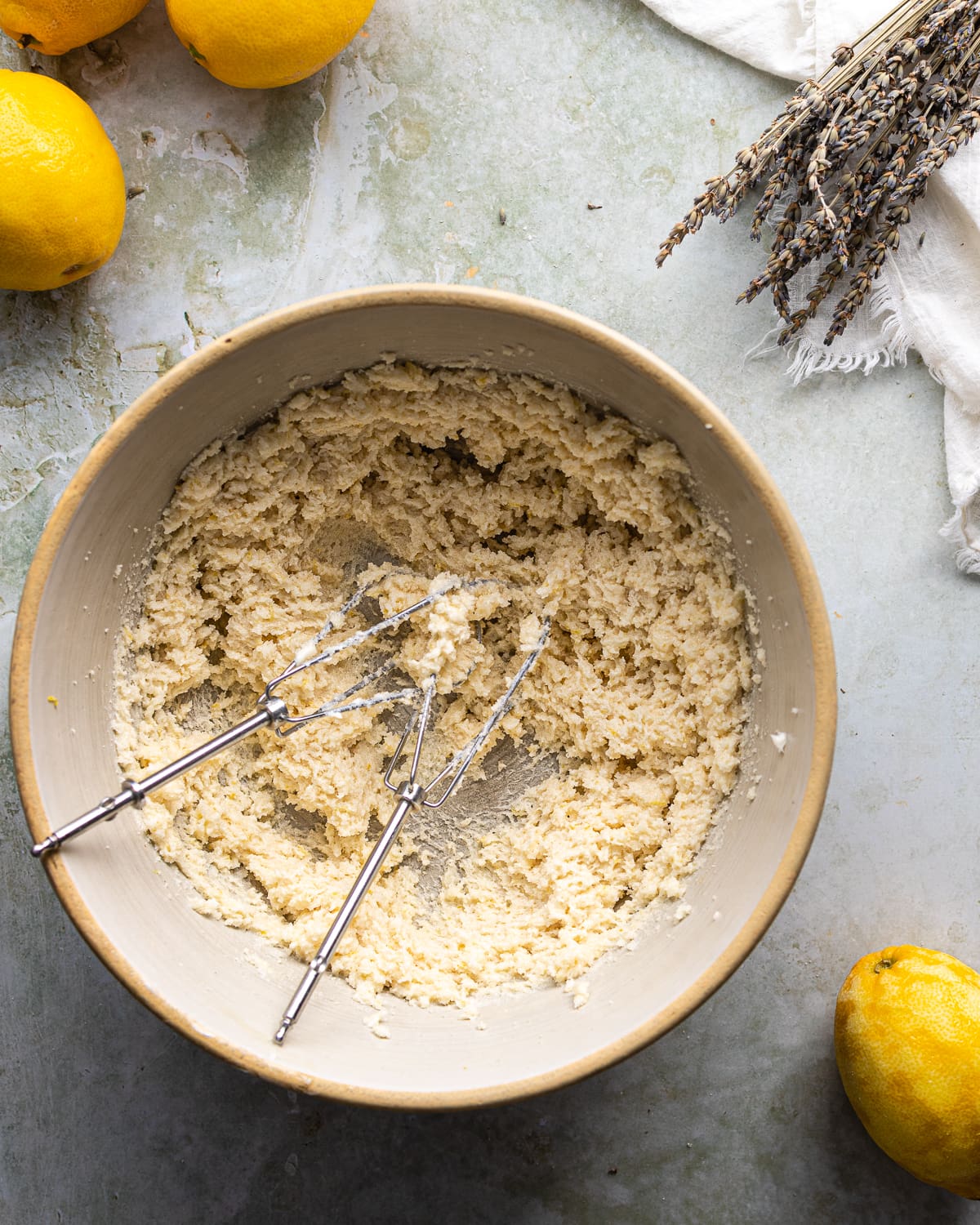
STEP 3: Beat butter and sugar together until no lumps remain
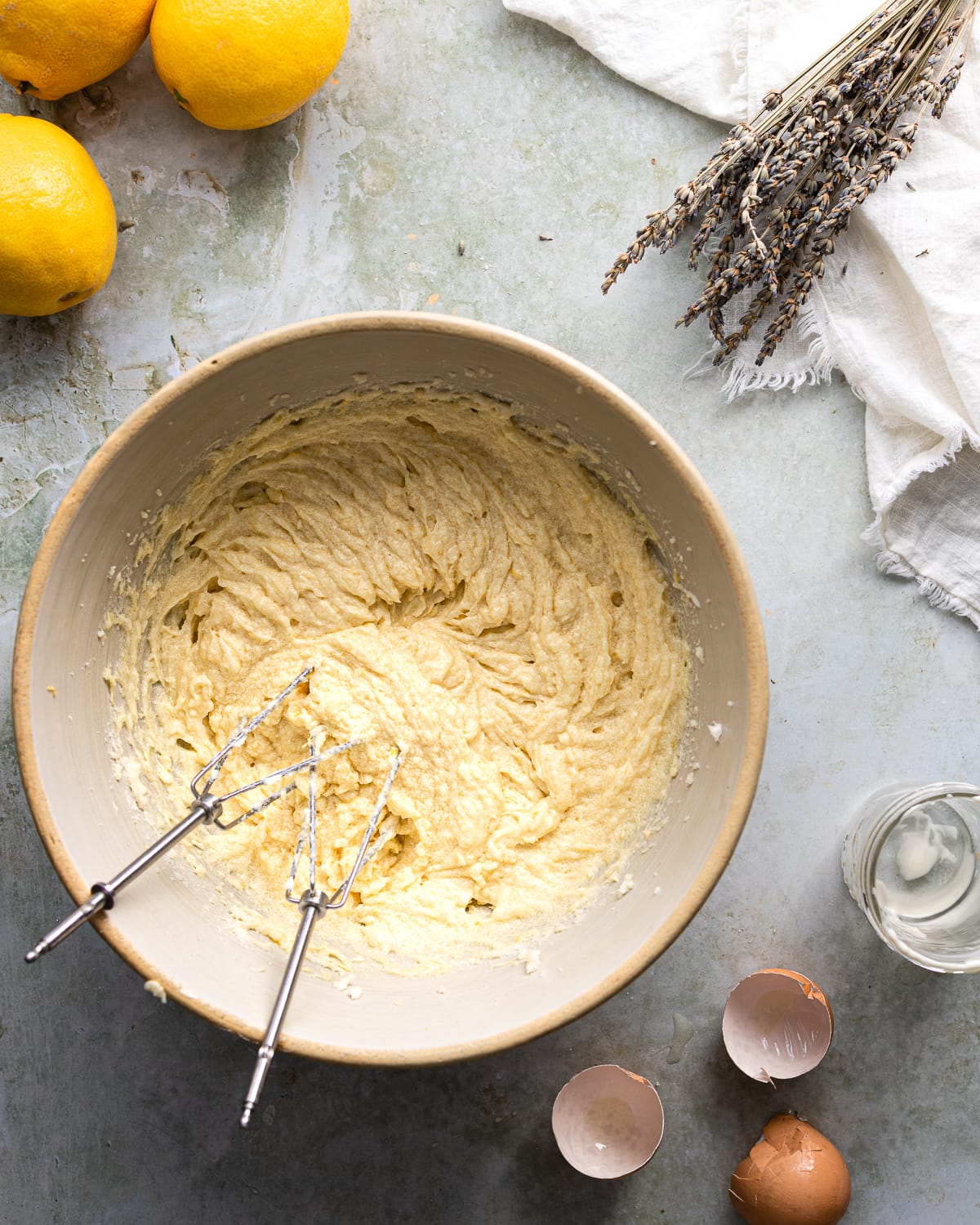
STEP 4: Add sourdough discard and eggs into sugar, butter mixture
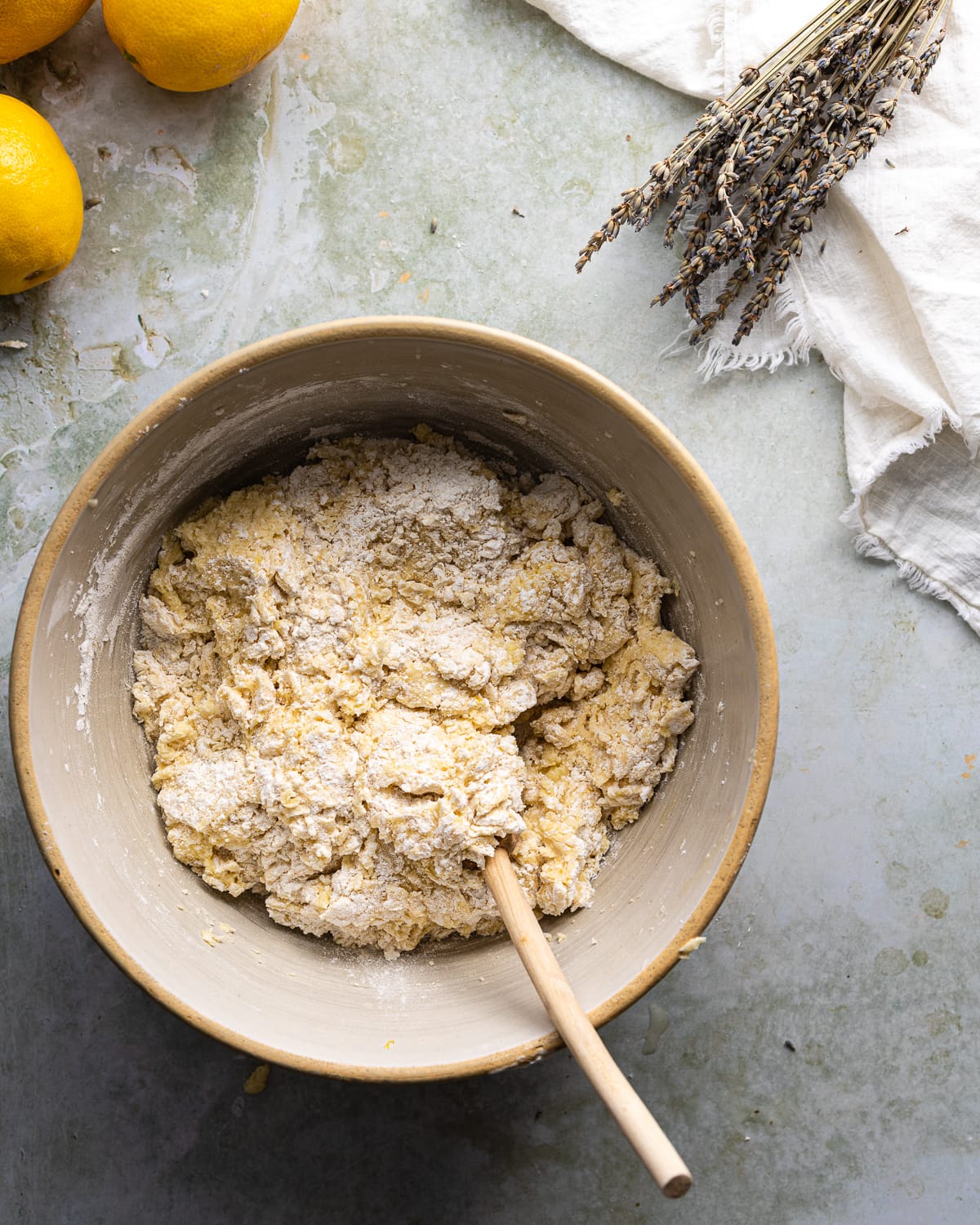
STEP 5: Fold in the all-purpose flour, cake flour, baking soda and salt until only a few traces of flour remain
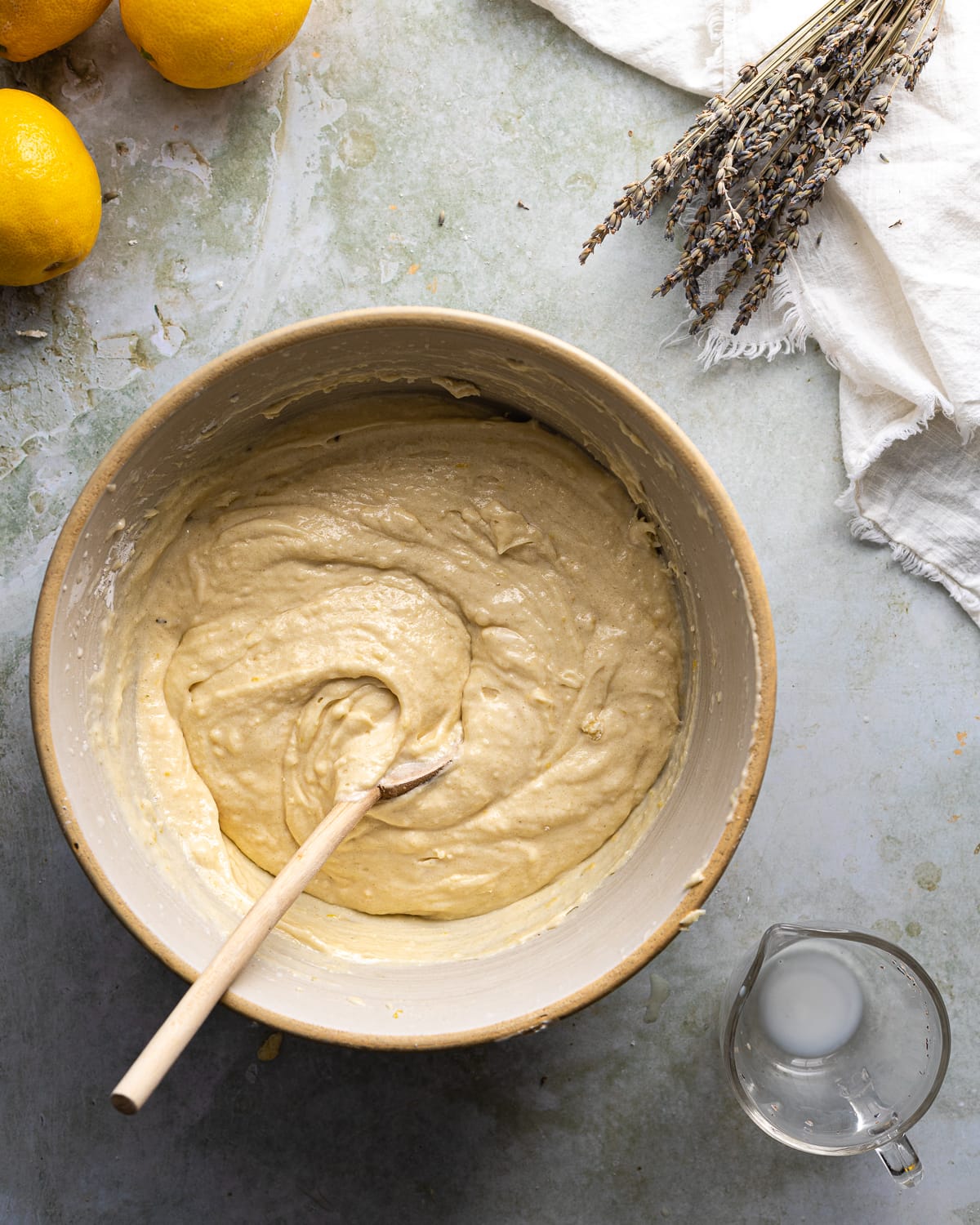
STEP 6: With the beaters on slowly drizzle the milk into the batter and switch to a spatula to completely incorporate the milk
Do not cream butter or aerate batter. This cake is formulated with the exact amount of leaveners. Try your best not to whip the batter or it will become too airy and sink as it bakes which results in a dense and gummy cake.
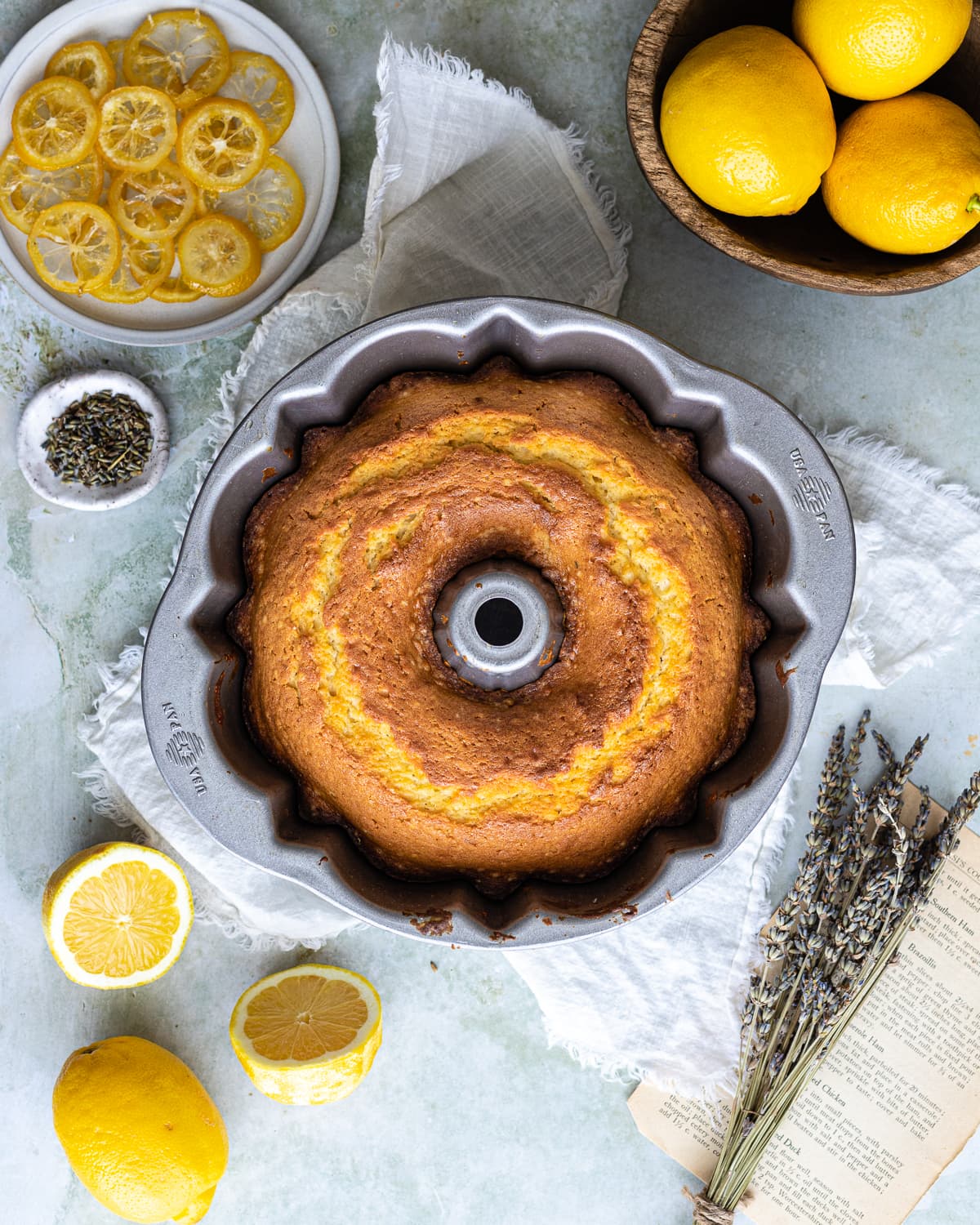
STEP 7: Bake at 350 for 1 hour and 15 minutes
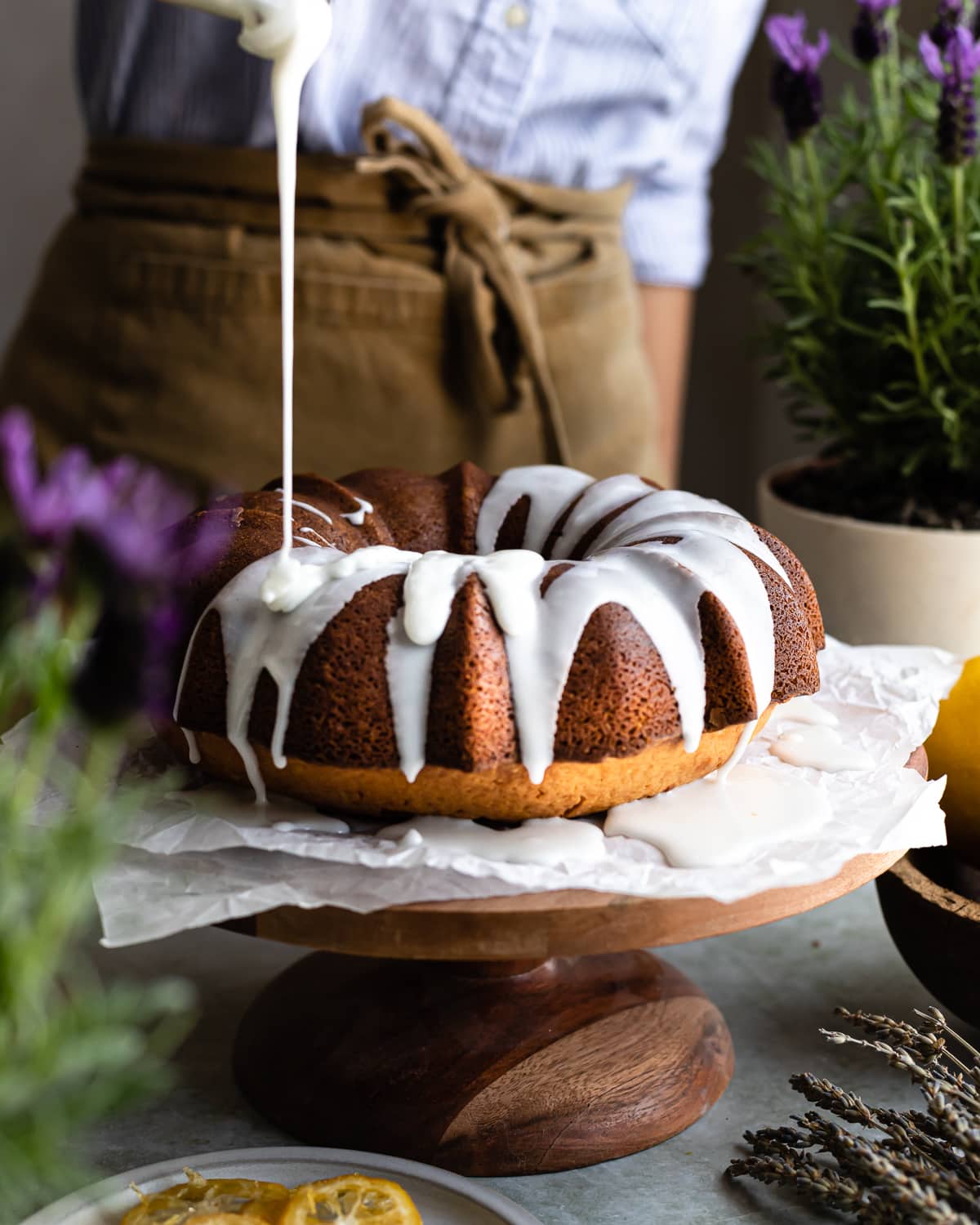
STEP 8: Glaze after the cake has cooled completely
Baker's Tips
Grease your bundt pan very well: For the best results, grease every nook and cranny of your pan. I like to do this with my fingertips so I can feel any spots that are not coated with oil.
Bake your cake in advance: Freshly baked bundt cakes can be quite fragile, so turning them out of the pan before they are completely set will cause them to break apart. It’s best to bake the cake the night before, this will allow the cake to cool and set completely which will make removing it from the pan as well as frosting it much easier.
Double sift the powdered sugar: Lumpy powdered sugar will result in grainy glaze. Set yourself up for success by sifting the powdered sugar at least once, ideally twice. This will ensure your icing is smooth and silky.
For instructions on how to make this cake using a stand mixer, check out Mimi's recipe.
How to Get a Bundt Cake Out of the Pan
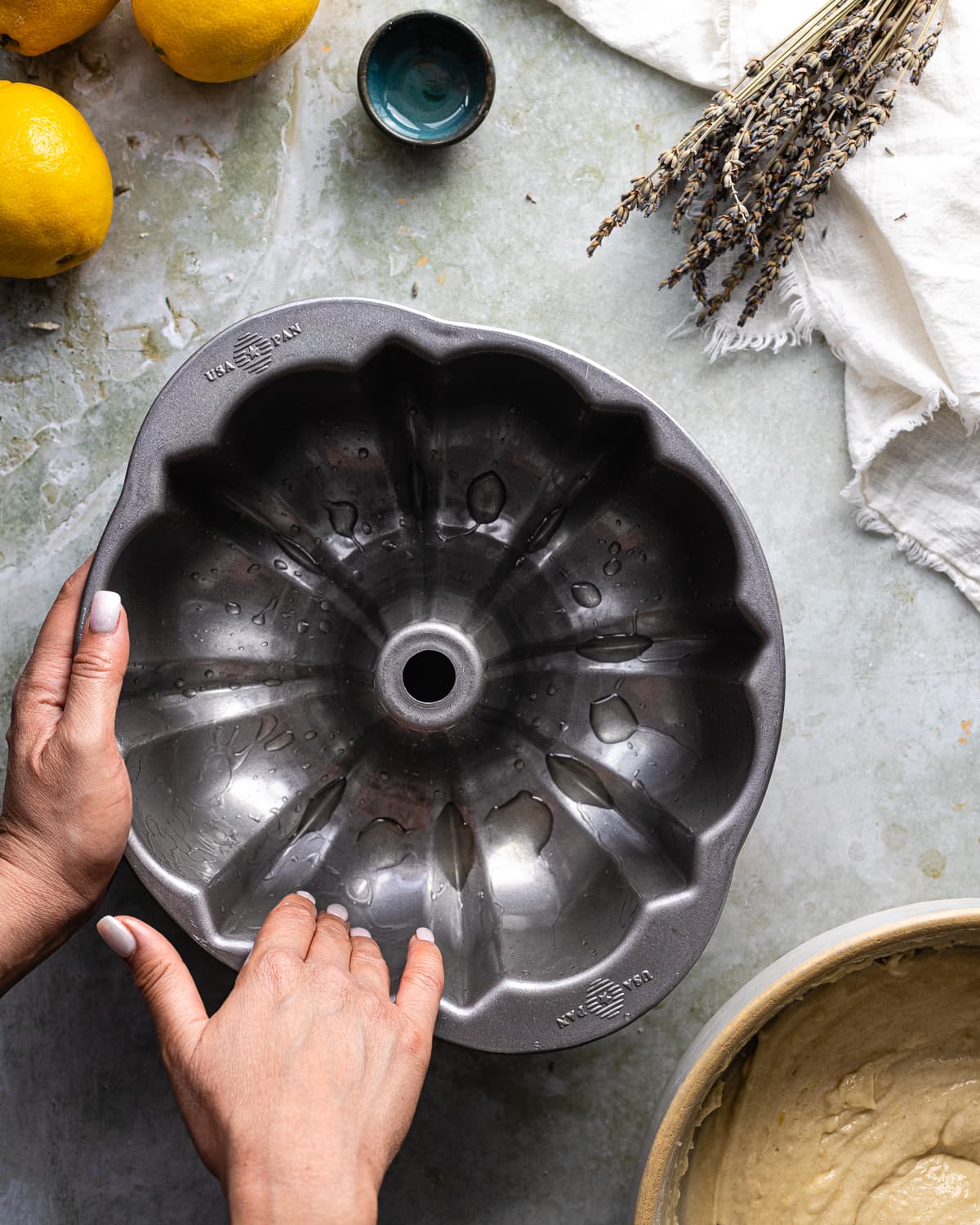
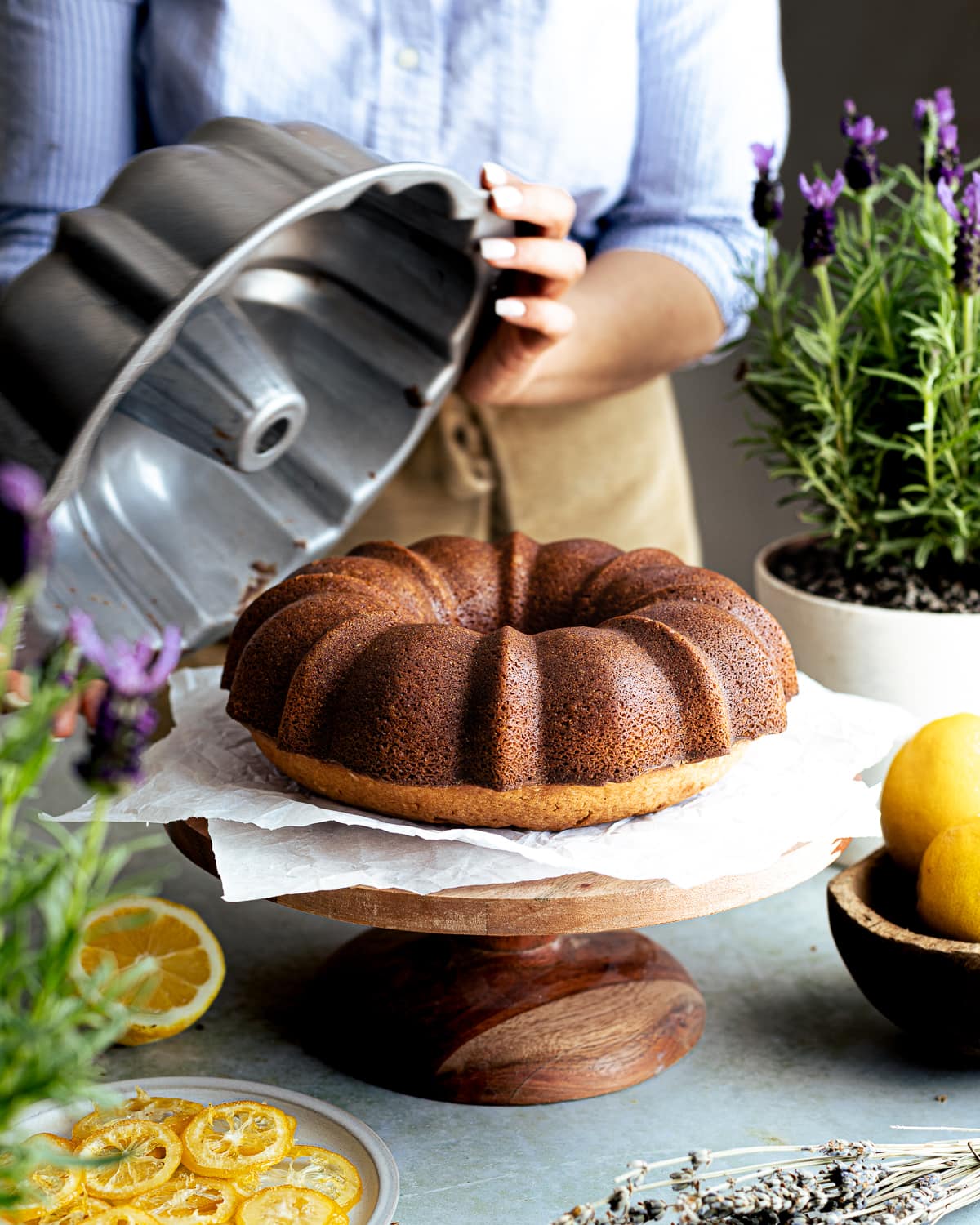
- Set yourself up for success by buying the right pan, I’ve owned a few bundt pans in the past and my USA Pan 10-inch Bundt Pan is the first one that has turned out a perfect cake.
- Grease the bundt pan with canola oil using your fingers, ensure you feel the oil in every nook of the pan and drain or wipe away any excess to prevent it from pooling up in the bottom of the pan.
- Let the cake cool in the pan, cakes are fragile while they are still warm. This is the reason most of my bundt cakes broke apart in the past because the crumb was not completely set (or as Mimi says, if the cake breaks apart, it’s because it wasn’t ready to come out).
- Turn the cake out on your serving platter, and give the pan a tap, your cake should pop right out!
- If you’re still nervous about your cake sticking, use Mimi’s fool-proof method for How to Remove Cakes Perfectly.
Love sourdough cakes? Check out my recipes for Sourdough Carrot Cake, Sourdough Pumpkin Bundt Cake, Sourdough Pineapple Upside-Down Cake, Sourdough Orange Upside Down Cake and Sourdough Chocolate Cake.
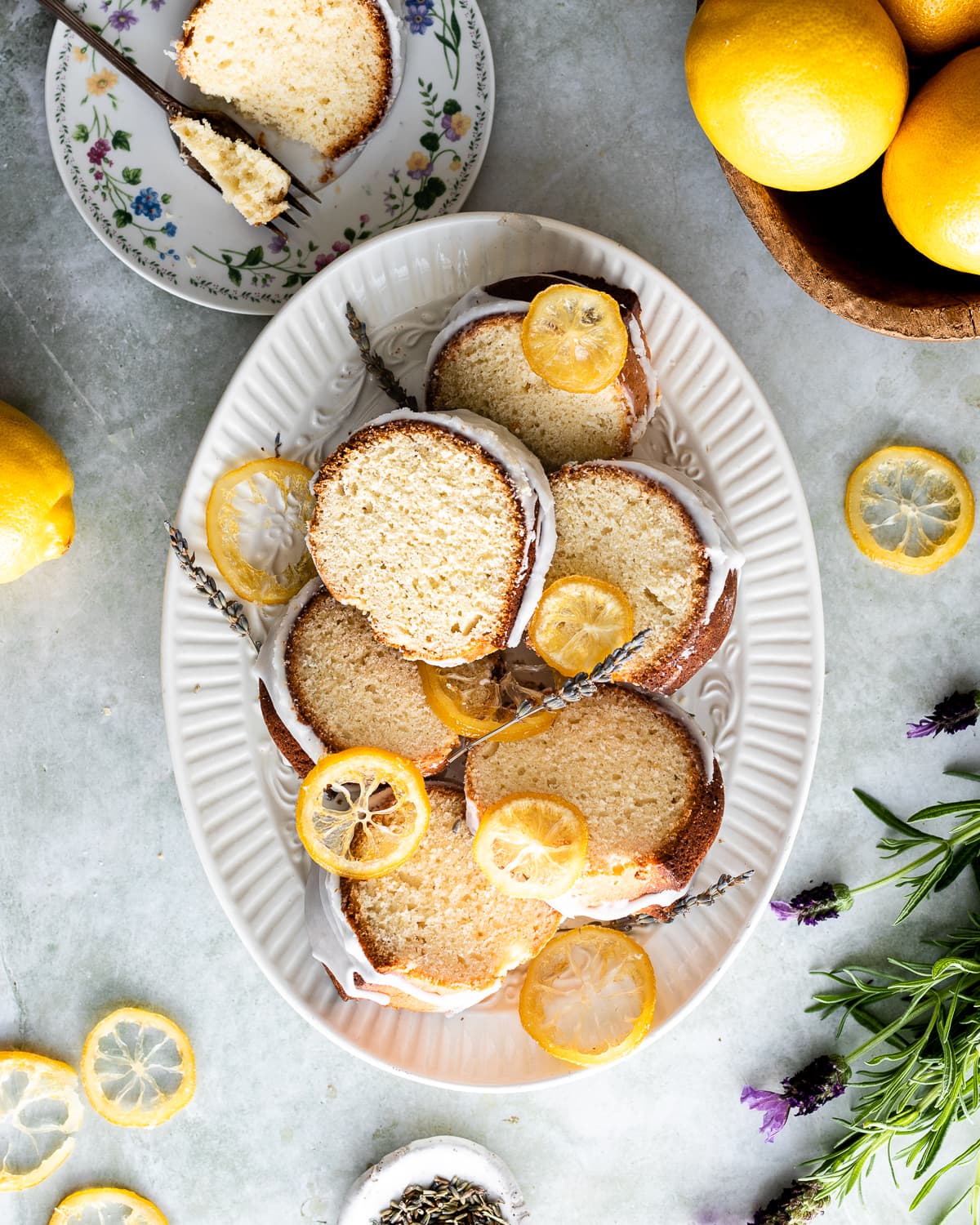
Recipe FAQs
Grease your bundt pan completely. I like to use my hands to make sure I've coated every corner, nook and cranny in my pan covered. It's also best to let your cake set before trying to remove it from the pan.
Warm cakes are quite fragile which can cause them to break up when you try to remove them from the pan. It's best to let the cake cool in the pan and wait for the crumb to set before turning it out.
Check out Mimi's method for seamlessly taking cakes out of the pan if you are still nervous.
Absolutely, you can add 28 grams of all-purpose flour and 28 grams of water.
You May Also Like
Did this recipe rise to the occasion?
★★★★★
Please leave a star rating and a comment. Your feedback helps me create more delicious sourdough recipes. I read and truly appreciate every message.
Don't forget to PIN this recipe on Pinterest to save it for later!
Thank you for your support!

Lavender Lemon Sourdough Bundt Cake
Equipment
- 10-inch bundt pan
This section may contain affiliate links
Ingredients
Batter
- 226 grams whole milk
- 2 teaspoons dried lavender
- 340 grams cane sugar
- 1 lemon zested
- 226 grams unsalted butter softened
- 3 eggs large
- 57 grams sourdough discard
- 189 grams cake flour
- 160 grams all-purpose flour
- 10 grams baking powder
- 6 grams salt
Prep
- 28 grams canola oil
Glaze
- 284 grams powdered sugar sifted
- 14 to 21 grams lemon juice
Click US Customary to view volume measurements
Instructions
- Prep: Preheat the oven to 350°F.
- Infuse milk: Combine milk and lavender in a small sauce pan. Heat until the mixture registers 140 F, remove from heat and allow to steep for 5 to 10 minutes or until fragrant. Staring the lavender out of the milk and discard. Set aside.
- Make the batter: In a large mixing bowl, combine the sugar and lemon zest together. Use your fingertips to rub the zest into the sugar.
- Beat butter into the sugar using a handmixer fitted with beaters until combined and there are no chunks of butter left (don’t cream or aerate the butter).
- Add the eggs and sourdough discard to the butter mixture and mix on low until combined.
- Fold in the all-purpose flour, cake flour, baking powder, and sea salt in that order, just until combined and a few traces of flour remain.
- With the hand mixer on, slowly stream the milk into the batter until a third of it is incorporated into the batter. Switch to a spatula or wooden spoon and fold the remaining milk until just combined, this will prevent too much air from being whipped into your batter.
- Grease the pan: Pour canola oil into the bundt pan. Use your fingertips to coat all the nook and crannies of the pan with oil. Pour out any excess.
- Bake: Pour the batter into the prepared pan. Bake for 1 hour 10 minutes to 1 hour 15 minutes or until a toothpick inserted in the center comes out clean and the top is golden brown. Allow to cool completely in the pan at least 3 hours or overnight.
- Make the glaze: Combine the sifted powdered sugar and 2 tablespoons of lemon juice in a bowl. Whisk together until smooth, add in lemon juice a drop at a time to thin the glaze out into your desired consistency. It should be a little thick so it doesn’t run off your cake.
- Remove from pan: Once the cake has cooled and set completely, turn it out of the pan and plop it onto your serving platter (gravity will help dislodge the cake from the pan).
- Glaze and decorate: Pour the glaze over the top of the cake. Sprinkle lavender on top (or just on one side) if you want extra lavender flavor! Top with candied lemons for a decorative twist. Allow the glaze to set for 30 minutes before slicing.
- Store: Store cake slices in an airtight container for up to 3 days.
Tips
These recipes were developed and tested using grams for precise measurements. To increase your chances of success, I recommend investing in a kitchen scale. I've included rough volume estimates (in tablespoons and cups), but they might not be totally accurate.
Remember all ovens are unique, these recipes were tested in my oven which runs cooler than others. You might need to lower the temperature if your bake appears to be browning too quickly. Monitor your bake closely and make adjustments if needed.
Notes
High Altitude: Bake at 350°F for 1 hour 15 minutes or until a toothpick inserted in the center comes out clean and the top is golden brown.
Nutrition
I am not a nutritionist or dietitian, any nutrition information provided is an estimate.


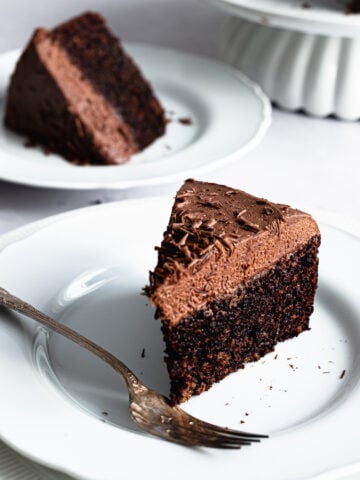
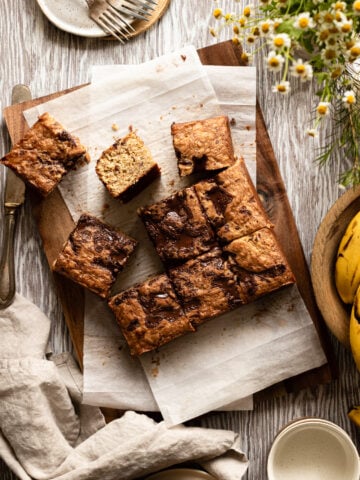
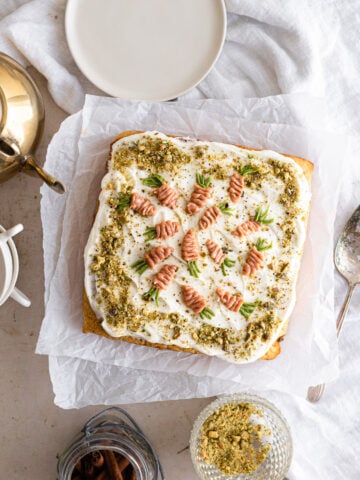
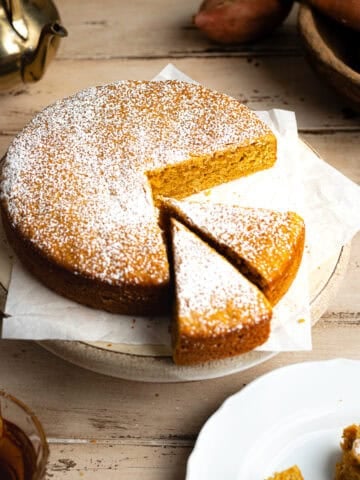

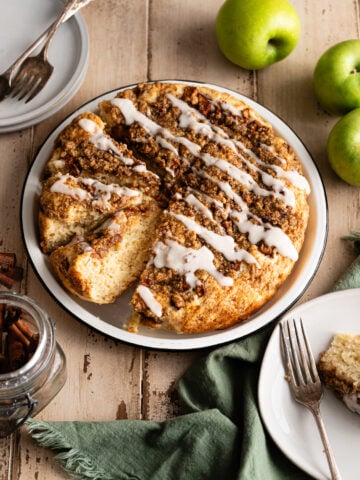

Tara says
For the nutritional info above what is the portion? A slice? How many slices to cake. TIA
Hannah Dela Cruz says
Nutrition info is based on 1 slice of cake if you divide them into 16 equal portions.
Amie says
Lovely, not too sweet and moist.
Hannah Dela Cruz says
Glad you loved this one!
Kathleen Caywood says
Would there need to be any changes to bake into loaf pans?
Hannah Dela Cruz says
You may need to bake for less time!